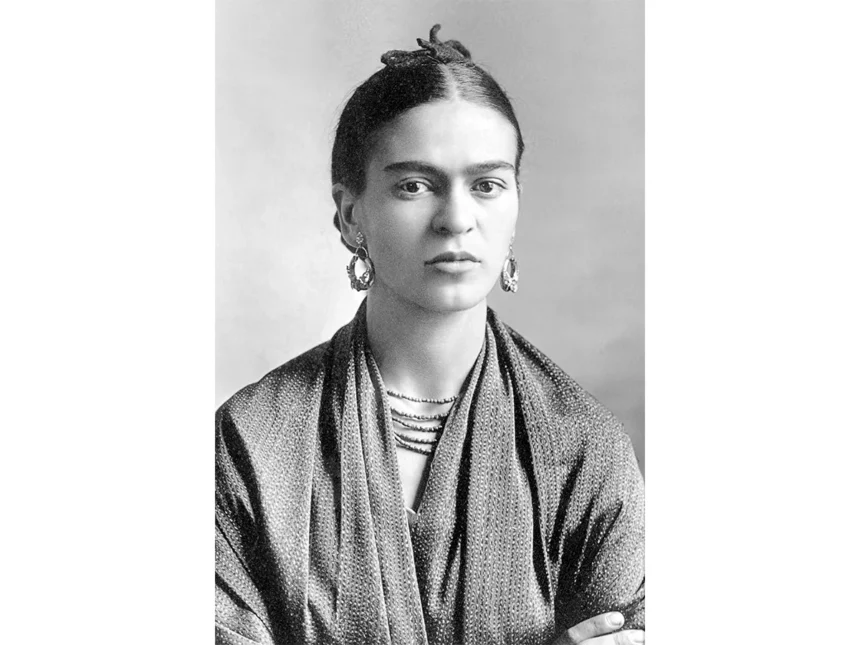Frida Kahlo: A Life of Art, Passion, and Resilience
Magdalena Carmen Frida Kahlo y Calderón, known to the world as Frida Kahlo, was born on July 6, 1907, in Coyoacán, Mexico City. Her life was a testament to the human spirit’s capacity for creativity, resilience, and determination.
Early Life and Family
Frida’s father, Guillermo Kahlo, was a Hungarian-German photographer who immigrated to Mexico. He suffered from epilepsy and was known for his perfectionism. Her mother, Matilde Calderón y González, was a devout Catholic of Spanish and indigenous descent. Frida had three sisters: Matilde, Cristina, and Isabel.
Physical Health and Disability
At age 6, Frida contracted polio, which left her right leg weakened. This early experience with disability would shape her perspective on life and art. At 18, a devastating bus accident caused multiple injuries, including a broken spine, pelvis, and leg. She underwent numerous surgeries and endured chronic pain.
Artistic Training and Influences
Frida studied art at the San Carlos Academy of Fine Arts. Influenced by Mexican folk art, surrealism, and realism, she developed a unique style. Mentored by Diego Rivera and other prominent Mexican artists, she honed her craft.
Marriage to Diego Rivera
In 1929, Frida married Diego Rivera, a renowned muralist. Their relationship was tumultuous, with infidelities on both sides. They divorced in 1939 but remarried in 1940.
Artistic Career
Frida’s artwork gained recognition in the 1930s. Her first solo exhibition was in New York City (1938). She explored themes of identity, culture, and feminism. Iconic works include:
– “The Broken Column” (1944)
– “The Two Fridas” (1939)
– “Self-Portrait with Thorn Necklace and Hummingbird” (1940)
Politics and Activism
Frida joined the Mexican Communist Party in the 1940s. She supported the Mexican Revolution and social justice causes.
Love Affairs and Relationships
Frida had affairs with men and women, including Leon Trotsky. She maintained close relationships with artists, intellectuals, and politicians.
Later Life and Death
Frida’s health declined significantly in the 1950s. She underwent amputation of her right leg in 1953. Frida Kahlo died on July 13, 1954, at age 47.
Legacy and Cultural Impact
Frida Kahlo’s legacy extends far beyond her artwork. She is an iconic figure in modern art, feminism, and Latin American culture. Her life and work inspire literature, music, film, and fashion.
Frida Kahlo Museum
La Casa Azul (Blue House), Frida’s childhood home, is now the Frida Kahlo Museum. Located in Coyoacán, Mexico City, it showcases her artwork, furniture, and personal belongings. The museum offers:
– Guided tours
– Exhibitions
– Art workshops
– A garden and café
Visitors can experience Frida’s life and art in the place where she grew up.
Conclusion
Frida Kahlo’s life was a testament to the human spirit’s capacity for creativity, resilience, and determination. Her artwork continues to inspire generations. The Frida Kahlo Museum is a pilgrimage site for fans worldwide.
Timeline:
– 1907: Born on July 6
– 1913: Contracted polio
– 1925: Bus accident
– 1929: Married Diego Rivera
– 1938: First solo exhibition
– 1939: Divorced Diego Rivera
– 1940: Remarried Diego Rivera
– 1953: Leg amputation
– 1954: Died on July 13
Quotes:
– “Feet, what do I need you for when I have wings to fly?”
– “At the end of the day, we can endure much more than we think we can.”
– “I paint my own reality.”
Major Works:
– “The Broken Column” (1944)
– “The Two Fridas” (1939)
– “Self-Portrait with Thorn Necklace and Hummingbird” (1940)
– “The Wounded Table” (1940)
– “Henry Ford Hospital” (1932)
– “Me and My Doll” (1937)
– “The Dream” (1940)
– “Self-Portrait with Unbraided Hair” (194




